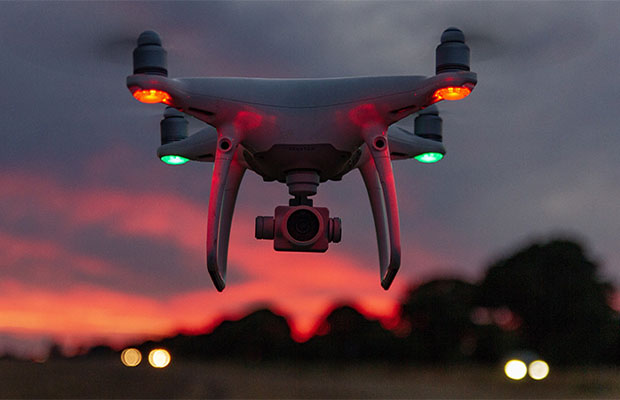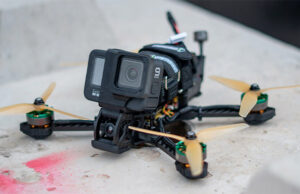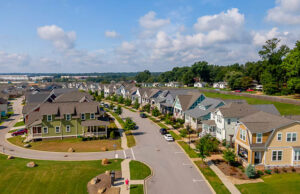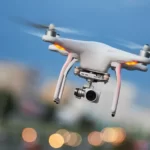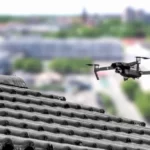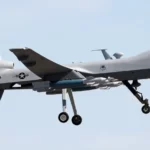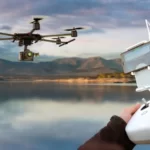Want to use a drone for night scenery capture but wonder: can you fly a drone at night? Simply put, yes you can. But, there are different rules and regulations depending on what your purpose is for flying your drone and where you choose to fly it. All the specifics are outlined in the guide that follows.
There is still a lot of ambiguity regarding the safe nighttime drone flight practices. For everyone, from drone enthusiasts to business drone operators, I would like to make everything crystal clear.
The regulations for nighttime flying have evolved over time, and in April 2021, the FAA(opens in new tab) (the Federal Aviation Administration) released the most recent guidance on the subject, which did away with some of the earlier restrictions like additional waivers.
Learn more by reading on!
Table of Contents
Can You Fly Drones at Night?
You most certainly can. As a hobbyist, To operate your drone at night, you don’t need a license. You only need to adhere to a few fundamental safety precautions.
These regulations, which were released by the Federal Aviation Administration (FAA), will help you avoid issues with law enforcement and prevent you from losing or crashing your drone at night.
Read More: What Do Police Drones Look Like At Night?
Rules for Flying Drones at Night
- Fly for hobby or recreational purposes only
- Follow a community-based set of safety guidelines
- Fly the UAS within visual line-of-sight
- Give way to manned aircraft
- Provide prior notification to the airport and air traffic control tower, if one is present when flying within 5 miles of an airport
- Transport UAS that weigh no more than 55 lbs. unless certified by a community-based organization
Do I Need a License to Fly My Drone at Night for Commercial Purposes?
Yes, to legally operate a small UAS under Part 107, you will need to have remote pilot airman certificate. You must have a supervisor who holds such a certificate as an alternative.
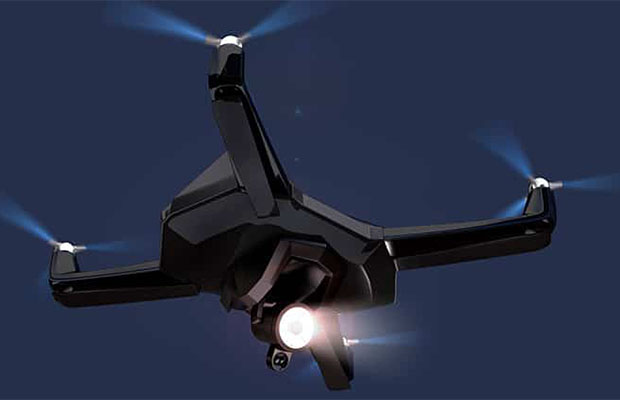
You must be at least 16 years old to be eligible for such a pilot certificate. There are two options for applying for the certificate:
- You can pass an aeronautical knowledge test at a knowledge testing center which has been FAA-approved
- You must have passed a flight test within the last 24 months if you already hold a Part 61 pilot certificate other than a student pilot certificate, and you must complete an online UAS training course offered by the FAA.
Related Post: How to Spot a Drone at Night?
Anti-collision Lighting
When flying at night, you must have a drone that complies with FAA safety regulations and anti-collision lighting that is visible from three miles away. To prevent a collision, this lighting must be mounted on top of the drone and have a fast enough flash rate.
We suggest a product like the Lume Cube STROBE Anti-Collision Light(opens in new tab), which costs around $40, is appropriate for all drones, and—most importantly—follows the FAA’s regulations.
Best Practices for Flying a Drone at Night
There are some safety fundamentals and common sense guidelines that you should follow in addition to the steps outlined above in order to legally fly a drone at night.
- Mark your drone on the outside with the registration number and carry proof of registration with you
- Plan your flying pattern – be sure to check out your flight zone in the daytime so you can understand the area better and assist with navigating it at night-time
- Whilst your drone needs onboard anti-collision lighting, it wouldn’t hurt if you also took additional lighting such as a flashlight to help you set up
- Make sure you stay within the boundaries of the authorization – as mentioned you cannot exceed the ceiling from the LAANC certification, so it’s best to work out what’s within your limitations
- Keep your drone within the visual line of sight – this will be more difficult at night and could help if you have another visual observer co-located physically next to you to keep eyes on the skies
- When operating at night, pay attention to your surroundings and your capabilities. It’s obviously different to the daytime and requires more vigilance and adjustment for narrowed vision
- It should go without saying, but it’s very important that you always, always operate your drone in a safe manner
FAQs
Why is There Drones Flying at Night?
There are many purposes for flying a drone at night, such as search and rescue, firefighting, surveillance, law enforcement and security, agriculture, entertainment, videography or locating a stable drone.
Can a Drone Take Pictures at Night?
Up until recently, only professional drones could capture quality images and videos at night. Thank goodness, that has changed. Numerous consumer drones can now take high-quality videos and pictures at night.
Do Police Use Drones to Spy?
Drones allow police departments to survey crime scenes and search grids within moments of arriving on scene, and to do so much more comprehensively from the air.
Final Thoughts: Can You Fly a Drone at Night
Flying drones at night can be an awesome experience and you will be able to capture an amazing footage
But keeping you within the bounds of the law requires you to be aware of the night flight regulations in your area.
Thankfully, most nations have clear and simple rules. If you want to buy a drone for night use, read our post on Best Drones For Night Photography.
